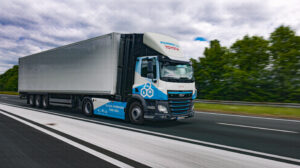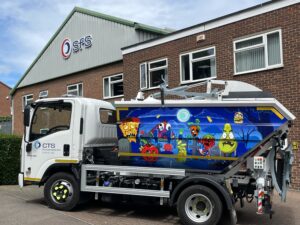According to Dynamon, the planning software provider for the newly launched eFREIGHT 2030 trial, a consortium that aims to put electric HGVs with the correct infrastructure on the road, these types of vehicles will be pushed to their limit and will prove their place in logistics fleets in the next decade.
The eFREIGHT 2030 project is the most ambitious trial to date. It intends to demonstrate what electric HGVs can do in real-world conditions by taking on roles that diesel trucks usually complete, illustrating a business case for their use, and providing a publicly accessible network of 1MW HGV charging hubs nationwide.
Funded by the Department for Transport in partnership with Innovate UK, the £63 million trial involves a consortium of fleet operators, including Expect Distribution, Kuehne+Nagel, Maritime Transport, Menzies Distribution, Welch’s Transport and Wincanton Group, retailer Marks & Spencer, vehicle manufacturers DAF Trucks, Renault Trucks and Scania Trucks, with charging infrastructure providers Voltempo Group and Fleete Group.
Dynamon provides the software, allowing all other partners to install the right components over the next 18 months before the on-the-road trials begin. This includes installing charge points correctly, choosing the right tractors and trailers, planning routes, and identifying suitable work schedules.
It will see zero-emission trucks working in front-line roles, and Dynamon’s CEO Angus Webb says its ZERO software will ensure operators can confidently put e-HGVs on the road and not only replace diesel but also do so within acceptable operational, cost, and scheduling parameters.
‘This isn’t about giving electric HGVs easy routes and light schedules for demonstration purposes,” said Webb. ‘It is about stress testing them in hard-working environments where they must deliver results. The trial will prove what happens when you max out e-HGVs daily.
‘Because of that, a considerable amount of planning needs to go into this project so that when the vehicles hit the road, they are maximised in terms of their performance, that the operators have the proper HGV configuration for the role, and the infrastructure is in place to support them and get the job done.
‘That’s where Dynamon comes in: our software can help our partners to plan exactly every element so they can push these trucks as hard as possible and prove that when the correct strategy and support are in place, electric can work cost-effectively.’
Although the full rollout of e-HGVs in the trial happens in 2026, in the next 18 months, Dynamon will work with partners to model scenarios and infrastructure needs while some electric trucks are put on the road in a soft launch to provide data and insight.
‘When you consider the challenges around infrastructure, there is not long before this trial is fully up and running. We must ensure no effort is wasted during the planning and ramp-up stage. For example, there will be depots that are not feasible to be electrified to the level required in the time, so we must identify suitable sites,’ said Angus Webb.
‘ZERO software can do this, and we are very confident that by 2026, we will see significant numbers of zero-emission trucks working hard on UK roads, proving that decarbonisation and electrification can work for the HGV freight sector.’




